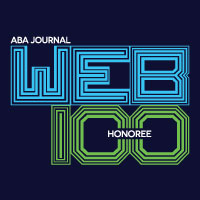It is quite amazing that within a few weeks we have had three major sets of specific recommendations for national access to justice strategies come out. They are, in order of appearance, the Guidance for NCSC Grants for Strategic Planning funded by Public Welfare Foundation to implemented the CCJ/COSCA Resolution, the Report of the ABA Commission of the Future of Legal Services, and the NCSC/IILS Civil Justice Initiative Report also endorsed by CC/COSCA Resolution.
What is even more amazing is how parallel they are. I have guilt this table, both to illustrate it, but more importantly to provide a tool to foster the collaboration that all call for one, one way and another.
This new Table compares three sets of ideas, an earlier one did it for only two of the three.
While there are many ways to use this Table, I would encourage everyone involved in any way with access to justice to start with the column for the group with which they work, go down to find the innovation areas they are working on, then move across on the table to find the recommendations made by the other groups, and then figure out how to use that parallelism to build collaboration. (The links to the three documents are in the table near the top, and also in the first para of this post.)
This graphic below, on Triage, gives one example of how the different recommendations relate. (Click on it to expand)

Here is another on simplification.

The full Chart in pdf is here. It is in Excel here. I encourage you to edit and modify for your situation, but please credit the source and changes and send to me.
As you read the Table, please marvel at how much the agendas are coming into congruence, and what that means for the future, not only in terms of what is achievable, but what systems we need to put in place, nationally as well as at the state and local level, to make the most of this moment of opportunity. When, in 2010, I was writing a paper on the Access to Justice: The Emerging Consensus and Some Questions and Implications for Judicature, the evolving parallelism was much more tentative. Back then, the four key elements of the consensus were described as “court simplification and services, bar flexibility, legal aid efficiency and availability, and systems of triage and assignment.” There was, however, absolutely no mention of the potential of expanding the roles of nonlawyers in the access system. I encourage folks to take a quick look at the Emerging Consensus paper to see how far we have come.
Obviously, this Table does not explicitly include the legal aid agenda. It may be that once the LSC strategic plan, with the draft now open for comment, is finalized, we may we able to add a new column. Indeed, would it not be wonderful if LSC were to include such a table in the final Strategic Plan, thereby highlighting both the force of the consensus and LSC’s contribution to leveraging the resources of other groups in support of progress? (Comments are due by Sept 6, so move it if you have anything to say.)
Everyone who wants to enhance collaboration should internalize these three sets of recommendations and the relationships between them.

